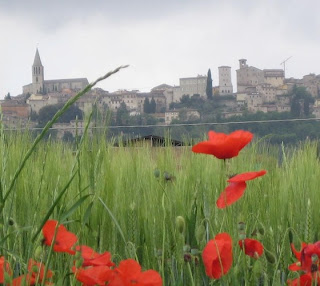Architecture of the World Boxes
Wednesday, August 24, 2011
Thursday, August 18, 2011
August Gallery Stroll Friday the 19th, 6-9pm
Charley Hafen Jewelers - Gallery will be taking a break from Gallery Stroll in August as they complete the first phase of construction for expansion of the gallery into their upstairs space.
Above: Cursive Is As Cursive Does, Toni Youngblood, Encaustic and mixed media on panel, 2011
The featured show for Charley Hafen's September Gallery Stroll will be Toni Youngblood's (Yes, that's me!) Calligraffiti, paintings in encaustic and mixed media. (The the unveiling of a large private portrait commission will be included with this exhibit.) More information will be provided on this exhibit here, next month.
For a complete listing of August Gallery Stroll participating galleries, visit the official Gallery Stroll website here.
Hope to see you out and about tomorrow evening!
Above: Cursive Is As Cursive Does, Toni Youngblood, Encaustic and mixed media on panel, 2011
The featured show for Charley Hafen's September Gallery Stroll will be Toni Youngblood's (Yes, that's me!) Calligraffiti, paintings in encaustic and mixed media. (The the unveiling of a large private portrait commission will be included with this exhibit.) More information will be provided on this exhibit here, next month.
For a complete listing of August Gallery Stroll participating galleries, visit the official Gallery Stroll website here.
Hope to see you out and about tomorrow evening!
Tuesday, August 16, 2011
Neuroscientist says viewing ART is like being in LOVE
If you find you are looking for "love" in all the wrong places consider this...Neuroscientist says viewing ART is like being in LOVE.
Read the full article here: Eye on Art - Winston Wachter Fine Art's eye on art...as well as a few other things.
Read the full article here: Eye on Art - Winston Wachter Fine Art's eye on art...as well as a few other things.
Scans suggest that art gives the same level of pleasure as being in love.
Monday, August 8, 2011
SKETCHPAD Series of Encaustic Paintings
More CALLIGRAFFITI...
Above: Very close up view showing the layers and three dimensionality of the encaustic wax paint.
I'm including a series of small works called SKETCHPADS in my upcoming show Calligraffiti: Encaustic and Mixed Media Paintings---in September, (at Charley Hafen Jewlers - Gallery September 14- October 17). As you can see from the photo above with the six-inch ruler, the SKETCHPADS paintings are relatively small, roughly 5x7 inches.


The artist reception is during September Gallery Stroll---Friday, September 16 from 6 till 9pm. When you visit the Calligraffiti show you will see the collection of little SKETCHPADS along with the regular size paintings (a couple of which have been featured here and here).
Thursday, August 4, 2011
Todi
Above: Todi, Toni Youngblood 2009, Encaustic and mixed media on board
Above: One of my student sketches of the street steps during our field trip to Todi.
Above: I remember him well from my art history class!
The Mars of Todi
Photo: Virtual Tourist
I spent Fall Quarter of grad school in Rome as a participant in the Architecture in Rome program through the University of Washington. (Twenty years prior, one of the first two participants in this program was now internationally known architect Stephen Holl.) Our program included field trips to other areas of Italy. The hilltown of Todi was one such destination.Photo: Stefan Pasquini
Todi is located in the Umbrian region of Italy and founded in the 8th-7th century BC. Its double line of protective city walls is reputed to have stopped Hannibal himself after his victory at the Trasimeno. Photo: Marta Piccotini
Todi is perched on a tall two-crested hill overlooking the east bank of the Tiber River, commanding distant views in every direction. (Wiki)Photo: via gogobot
Todi is known for its street steps which are built in the center of the street to make ascending and descending the steep incline of the cobblestone thoroughfares more pedestrian friendly.Above: One of my student sketches of the street steps during our field trip to Todi.
Above: Double click on this image. You've got to see this rendering of the wonderful interlocking piazzas, a delight to experience on foot.
In the 1990s, Richard S. Levine, a professor of architecture at the University of Kentucky, chose Todi as the model sustainable city, because of its scale and its ability to reinvent itself over time. After that, the Italian press reported on Todi as the world's most livable city.[1]
The Mars of Todi
Todi-Monte Santo
end of 5th cent. BC
hollow-cast bronze
height cm 141
cat. 13886
hollow-cast bronze
height cm 141
cat. 13886
'This is one of the very rare objects of ancient Italic statuary that has survived to our time. It shows a warrior dressed in armour and, originally, with a helmet, portrayed in the act of performing a libation before battle, pouring the liquid contained in a particular form of cup (patera) held by the extended right hand, while with the left he leans on an iron spear (the patera and remains of the spear, not visible in the photo, are in the showcase). The statue, which betrays the influence of Greek art starting from the middle of the 5th cent. BC, was found in Todi buried between slabs of Travertine, perhaps after having been hit by lightning. The dedicatory inscription, in the language of the ancient Umbrians but in the Etruscan alphabet, recalls that the statue was given as a gift (dunum dede) by a certain Ahal Trutitis. "(from the Gregorian Etruscan Museum of the Vatican Museum - Rome)
Beautifully detailed hand of the Mars of Todi.
My painting is named in honor of the beautiful town with its rich history, known in our time as Todi.
Subscribe to:
Posts (Atom)













